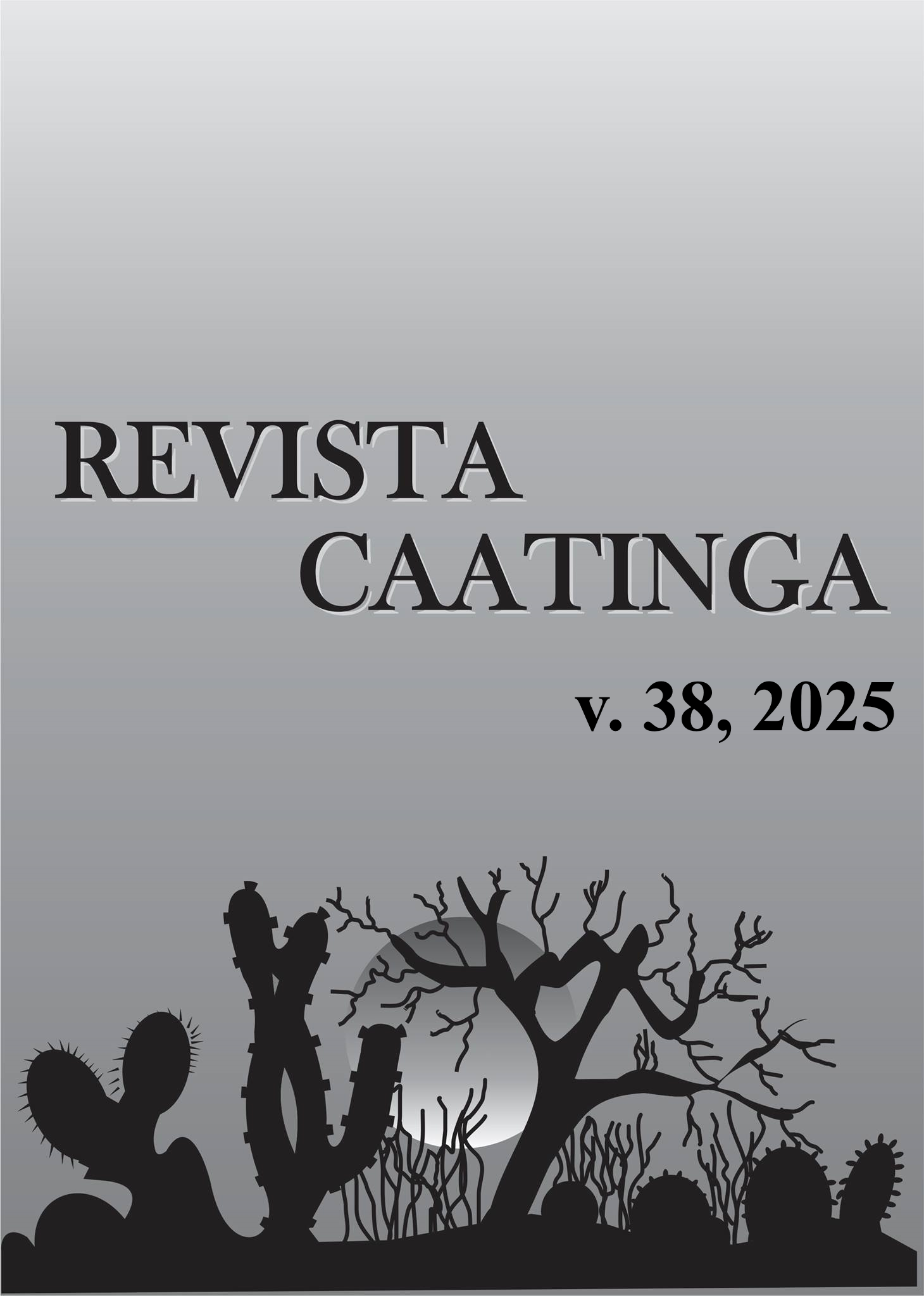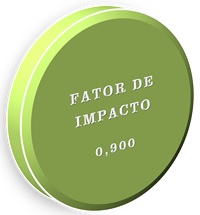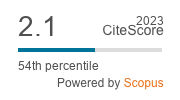Grain technological quality traits and relationship to mineral concentration in common bean
DOI:
https://doi.org/10.1590/1983-21252025v3812587rcKeywords:
Phaseolus vulgaris. Pearson’s linear correlation analysis. Multicollinearity diagnostics.Abstract
This study proposes to investigate the correlations between technological traits and minerals under different degrees of multicollinearity; define the degree of multicollinearity to be used in Pearson's linear correlation analysis; and identify technological traits suitable for indirect selection aimed at biofortification in common bean (Phaseolus vulgaris L.). Twenty-five common bean cultivars of different grain types were evaluated regarding 17 technological traits and minerals across four experiments. Correlation analysis was carried out using three degrees of multicollinearity (severe, moderate to strong, and weak), achieved after excluding highly correlated traits. Most of the analyzed traits displayed genetic variability, enabling selection for both technological traits and minerals. The amplitude of variation observed for r values and the number of significant correlations varied when correlation analysis was performed under different degrees of multicollinearity. Under weak multicollinearity, all high r values (r ≥ 0.90) were excluded, completely eliminating the possible undesirable effects of multicollinearity on these estimates and thus enhancing the efficiency of indirect selection. Selecting based on the lowest values of lightness and mass of 100 grains is favorable for the indirect selection of mineral-biofortified common bean cultivars.
Downloads
References
BOROS, L.; WAWER, A. Seeds quality characteristics of dry bean local populations (Phaseolus vulgaris L.) from National Center for Plant Genetic Resources in Radzikóv. Legume Research, 41: 669-674, 2018.
CRUZ, C. D. Genes Software-extended and integrated with the R, Matlab and Selegen. Acta Scientiarum Agronomy, 38: 547-552, 2016.
CRUZ, C. D.; CARNEIRO, P. C. S. Modelos biométricos aplicados ao melhoramento genético. 1. ed. Viçosa, MG: UFV, 2003. v. 2. 585 p.
CRUZ, C. D.; REGAZZI, A. J. Modelos biométricos aplicados ao melhoramento genético. 2. ed. Viçosa, MG: UFV, 1997. 390 p.
DEL CONTE, M. V. et al. Overcoming collinearity in path analysis of soybean [Glycine max (L.) Merr.] grain oil content. Plos One, 15: 1-15, 2020.
DELFINI, J. et al. Diversity of nutritional content in seeds of Brazilian common bean germplasm. Plos One, 15: 1-13, 2020.
HOSSAIN, K. G. et al. Interdependence of genotype and growing site on seed mineral compositions in common bean. Asian Journal of Plant Sciences, 12: 11-20, 2013.
KAHRAMAN, A.; ÖNDER, M. Correlations between seed color and nutritional composition of dry bean. Ratarstvo i Povrtarstvo, 50: 8-13, 2013.
KATUURAMU, D. N. et al. Genome-wide association analysis of nutritional composition-related traits and iron bioavailability in cooked dry beans (Phaseolus vulgaris L.). Molecular Breeding, 38: 1-18, 2018.
KLÄSENER, G. R.; RIBEIRO, N. D.; ARGENTA, H. S. Genetic divergence and selection of bean cultivars of different grain types based on physical traits. Revista Ciência Agronômica, 53: 1-12, 2022.
LI, K. et al. The good, the bad, and the ugly of calcium supplementation: a review of calcium intake on human health. Clinical Interventions in Aging, 13: 2443-2452, 2018.
MAPA - Ministério da Agricultura, Pecuária e Abastecimento. Cultivares ou espécies registradas. 2023. Available at: <https://www.gov.br/agricultura/pt-br/assuntos/insumos-agropecuarios/insumos-agricolas/sementes-e-mudas/registro-nacional-de-cultivares-2013-rnc-1/cultivares-ou-especies-registradas>. Access on: Jul. 13, 2023.
MCCLEAN, P. E. et al. Phenotypic diversity for seed mineral concentration in North American dry bean germplasm of Middle American ancestry. Crop Science, 57: 3129-3144, 2017.
MCDONOUGH, A. A.; YOUN, J. H. Potassium homeostasis: the knowns, the unknowns, and the health benefits. Physiology, 32: 100-111, 2017.
MIYAZAWA, M. et al. Análise química de tecido vegetal. In: SILVA, F. C. (Ed.). Manual de análises químicas de solos, plantas e fertilizantes. 2. ed. Brasília, DF: Embrapa Informação Tecnológica, 2009. v. 2, p. 191-233.
MONTGOMERY, D. C.; PECK, E. A.; VINING, G. G. Introduction to linear regression analysis. 5 ed. New York, NY, EUA: Wiley, 2012. 672 p.
RESENDE, M. D. V.; ALVES, R. S. Linear, generalized, hierarchical, bayesian and random regression mixed models in genetics/genomics in plant breeding. Functional Plant Breeding Journal, 2: 1-31, 2020.
RIBEIRO, N. D. et al. Genetic diversity and selection of bean landraces and cultivars based on technological and nutritional traits. Journal of Food Composition and Analysis, 96: 1-10, 2021a.
RIBEIRO, N. D. et al. Technological-nutritional quality traits and relationship to bioactive compounds in Mesoamerican and Andean beans. Revista Caatinga, 34: 266-275, 2021b.
RIBEIRO, N. D.; KLÄSENER, G. Physical quality and mineral composition of new Mesoamerican bean lines developed for cultivation in Brazil. Journal of Food Composition and Analysis, 89: 1-8, 2020.
RIBEIRO, N. D.; MAZIERO, S. M. Indirect selection for culinary quality and minerals in beans based on genotype × environment interaction. Revista Ciência Agronômica, 54: 1-10, 2023.
RIVERA, A. et al. The Spanish core collection of common beans (Phaseolus vulgaris L.): an important source of variability for breeding chemical composition. Frontiers in Plant Science, 9: 1-11, 2018.
SANTOS, G. G.; RIBEIRO, N. D.; MAZIERO, S. M. Evaluation of common bean morphological traits identifies grain thickness directly correlated with cooking time. Pesquisa Agropecuária Tropical, 46: 35-42, 2016.
STECKLING, S. M. et al. Genetic diversity and selection of common bean lines based on technological quality and biofortification. Genetics and Molecular Research, 16: 1-13, 2017.
Downloads
Published
Issue
Section
License
Os Autores que publicam na Revista Caatinga concordam com os seguintes termos:
a) Os Autores mantêm os direitos autorais e concedem à revista o direito de primeira publicação, com o trabalho simultaneamente licenciado sob a Licença Creative Commons do tipo atribuição CC-BY, para todo o conteúdo do periódico, exceto onde estiver identificado, que permite o compartilhamento do trabalho com reconhecimento da autoria e publicação inicial nesta revista, sem fins comerciais.
b) Os Autores têm autorização para distribuição não-exclusiva da versão do trabalho publicada nesta revista (ex.: publicar em repositório institucional ou como capítulo de livro), com reconhecimento de autoria e publicação inicial nesta revista.
c) Os Autores têm permissão e são estimulados a publicar e distribuir seu trabalho online (ex.: em repositórios institucionais ou na sua página pessoal) a qualquer ponto antes ou durante o processo editorial, já que isso pode gerar alterações produtivas, bem como aumentar o impacto e a citação do trabalho publicado (Veja O Efeito do Acesso Livre).







